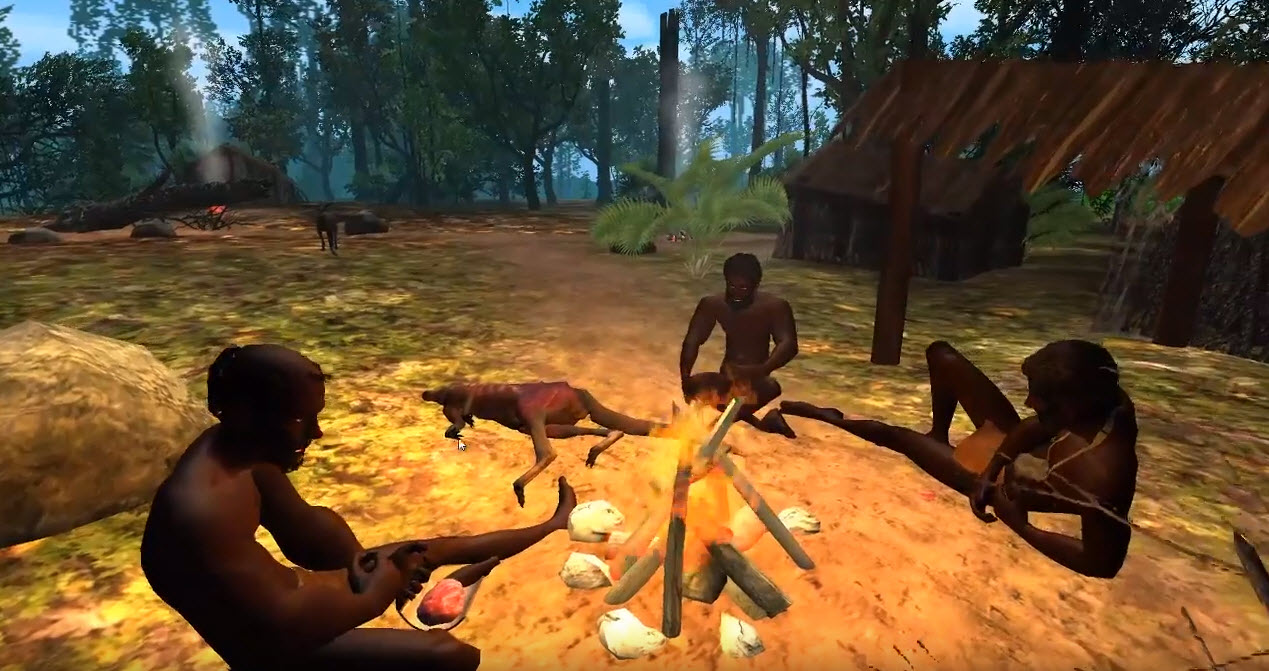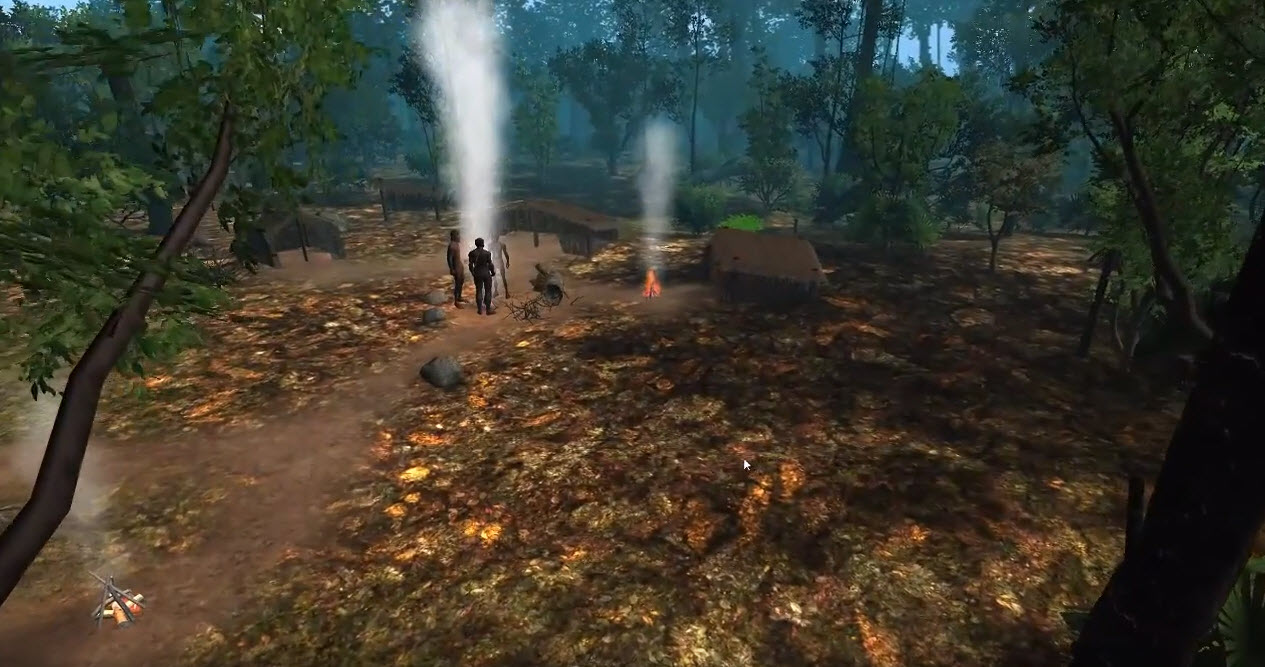- About Us
- People
-
Projects
- - Current Projects
-
- Past Projects
- - Book History Manuscripts
- - Mama and Papa in Indigenous Australia
- - Mapping Co-Lexification Patterns in Sahul
- - Palmerston Island Social Networks, Linguistic Variation and Language Change
- - Mapping Currents of Change and Exchange in the Pacific
- - Aboriginal Dreaming
- - Uruk 3000 BC
- - At the Heart of It
- - Music, Mobile Phones and Community Justice in Melanesia
- - Geo-language Games
- - Journal Finder
- - Migration, Mobility and Connection
- - Digital Lives and Archives of Irish Literature and History
- - Just Spaces
- - Digital Visualization: Ming and Qing Buddha Statues in the Hunan Region
- - ARCHivER
- - Waves of Words
- Events and Seminars
Aboriginal Dreaming
School of Computing Engineering and Mathematics
The main attraction of today is modern technology, enhanced with artificial intelligence, interactive multimedia, games and virtual reality (VR). Computer games and Virtual Reality combine the interactive possibilities of workshops with the multi-media. It allows us capture and simulate the transient nature of first peoples culture, the dreamtime, and to present these from various perspectives, either as an observer or a direct participant. Therefore, in our project, we focus on creating an immersive computer simulation, using computer games approach and virtual reality, focusing on various aspects of life and events, that have occurred throughout the history of aboriginal tribes living in Australia.
The benefits of our project are three-fold:
- We seek permission from Aboriginal cultural authorities (i.e. Elders/Traditional Knowledge Keepers) to capture and record Aboriginal perspectives
- For the purposes of our simulation, we collaborate with Aboriginal Elders to gain perspectives on the philosophical thinking of surviving in two worlds. Aboriginal people have a holistic worldview and belong to the land viewing the world from a different perspective for example in an Aboriginal voice "we belong to the land and have a responsibility to care for that land". In this project we recorded what life was like in community pre contact using motion capture technology. We aim to record and digitise Aboriginal languages and place them in the situational context. This not only preserves many already disappearing languages, but enables interested parties to learn them efficiently in the immersive manner.
- Along with this, we are continuously co-creating with Aboriginal people protecting their intellectual property by appropriately attribution with inputs into a large public database of Aboriginal resources, such as texts, images, videos and references to be used throughout our project and by any other interested party (available at http://gok.scem.uws.edu.au).
- We engage and co-create with the Aboriginal community to understand their perspectives by using simulation technology.
- During the development of our simulation, we initially engage the Aboriginal community to help us to co-create the content for our simulation. First, we engaged and seek permission from Aboriginal Elders to access their intellectual property and record their perspectives which can be later presented in a simulation. Then, we approach youth from various communities to help us co-create the 3D content and writing new stories, allowing others to re-live their experiences in the simulated environment.
- Raise appreciation and appropriate attribution for Aboriginal intellectual property within non-aboriginal population.
- Using our simulation, participants can learn by playing a game with a carefully crafted educational plot, which incrementally raises their knowledge about the presented topics. During this experience each party is able to re-live the experience from the perspective of the other party, helping understanding of both points of the view.
References
- Almajano, P., Lopez Sanchez, M., Rodriguez, I. and Trescak, T. (2014), 'Assistant agents to advice users in hybrid structured 3D virtual environments', Computer Animation and Virtual Worlds, vol 25, no 3-4 , pp 495 - 504.
- Trescak, T., Rodriguez, I., Lopez Sanchez, M. and Almajano, P. (2013), 'Execution infrastructure for normative virtual environments', Engineering Applications of Artificial Intelligence, vol 26, no 1 , pp 51 - 62.
- Aranda, G., Trescak, T., Esteva, M., Rodriguez,, I. and Carrascosa, C. (2012), 'Massively multiplayer online games developed with agents', Transactions on Edutainment VII, Springer 9783642290497.
- Trescak, T., Esteva, M. and Rodriguez, I. (2012), 'A shape grammar interpreter for rectilinear forms', Computer-Aided Design, vol 44, no 7 , pp 657 - 670.
- Aranda, G., Trescak, T., Esteva, M. and Carrascosa, C. (2011), 'Building quests for online games with virtual institutions', Agents for Games and Simulations II, vol 2 , pp 192 - 206.
- Trescak, T., Esteva, M. and Rodriguez, I. (2010), 'A virtual world grammar for automatic generation of virtual worlds', Visual Computer Journal, vol 26, no 6-8 , pp 521 - 531.
Project Members
- Dr Tomas Trescak
- Melissa Williams
- Dr Terry Sloan
- Professor Simeon Simoff
- Dr Anton Bogdanovych
- Elders on Campus
Dr. Tomas Trescak holds a PhD title in Computer Science from Autonomous University of Barcelona, Spain. Since May 2013, he is Postdoctoral Researcher in Digital Humanities, in the University of Western Sydney, Australia. The topics of his research concern serious games, interactive virtual worlds, intelligent virtual agents, crowd simulation and computational design techniques, such as shape grammars. Dr. Trescak's main contribution is in facilitation of execution of interactive 3D simulations and their application to the fields of social, cultural and historical agent-based simulation. He has developed several techniques and methods and implemented them in the set of open-source tools, used world-wide.
Mobile options:


